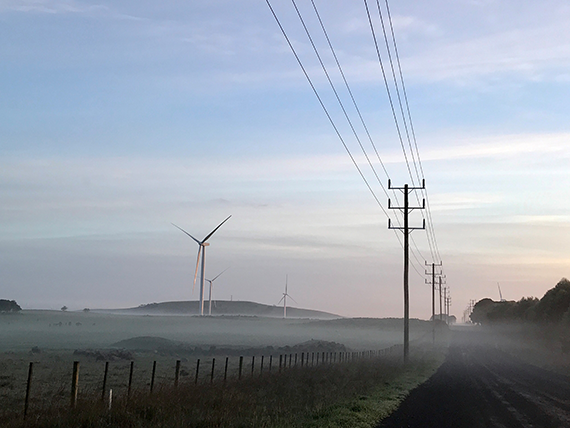When it comes to Australia’s energy future, communities have legitimate questions. When communities ask these questions, leaders, industry and government need to provide accurate information versus fuelling a community divide everyone is seeking to avoid. While people are entitled to their views, the facts are universal.
The fact is coal-powered electricity is leaving the system. These plants are old, breaking down more often, and 90 per cent of them will close this decade. The task is not ideological, it is practical. We need to replace the electricity we will lose with the cheapest option available. In Australia, that is wind and solar, with hydro and batteries to store power, and a little bit of gas as a backup.
While clean energy is new for some parts of Australia, it’s been operating here for close to 30 years. It’s an understood and mature technology with plenty of precedents to ensure we can get this right.
Some will say that clean energy projects are swallowing prime agricultural land. This couldn’t be further from the truth. Hosting these assets makes farms more productive.
On the same amount of land, a farmer can secure a new income independent of weather impacts, such as rain, and can continue to run livestock freely on their property. Access roads are maintained by operators making it easier and safer for farmers to traverse their properties and muster livestock. Farmers are already seeing better outcomes, with the shade from solar panels keeping the grass beneath greener for sheep to graze.
While clean energy is new for some parts of Australia, it’s been operating here for close to 30 years. It’s an understood and mature technology with plenty of precedents to ensure we can get this right.Chris O'Keefe Clean Energy Council National Spokesperson
Everyone understands the biggest risks to farming and our food security is drought. We should be mindful of this when people want to tell farmers what to do on their property. If a farmer wants to host turbines or solar panels to protect their business, we should respect their decision.
Clean energy is also making our regional communities more resilient and funding the infrastructure and programs that have been sought after for decades.
In April this year, $60 million in funding from the Central West Orana Renewable Energy Zone was announced to the community, funding affordable housing, critical water infrastructure, skills and training centres and community infrastructure - all part of an initial $128 million Community and Employment Benefit Package funded by clean energy developers.
Regional communities deserve facts, not fear. Claims made in the heat of the moment will only serve to further divide communities rather than bring people together. It is incumbent upon all of us that we have the answers to the issues, rather than using opportunities to enflame emotions.Chris O'Keefe Clean Energy Council National Spokesperson
These clean energy projects fund essential infrastructure, strengthen community ties and provide well paid training and careers in construction or in operations. Those careers can mean kids don’t need to leave town for the city when they finish school, their towns have the infrastructure to support them, and Councils are now earning the funding to provide the services they depend on.
To characterise the investment taking place as a ‘foreign-owned takeover’ is to deny regional Australia of the support they’ve been asking for.
Regional communities deserve facts, not fear. Claims made in the heat of the moment will only serve to further divide communities rather than bring people together. It is incumbent upon all of us that we have the answers to the issues, rather than using opportunities to enflame emotions.
Chris O’Keefe is the National Spokesperson for the Clean Energy Council and will be debating Barnaby Joyce during the Bush Summit in Wagga Wagga on Wednesday 27 August.





